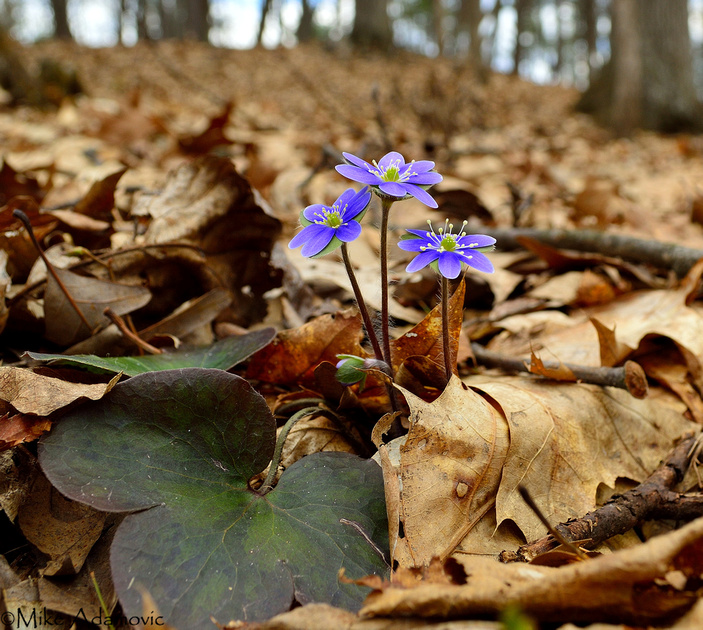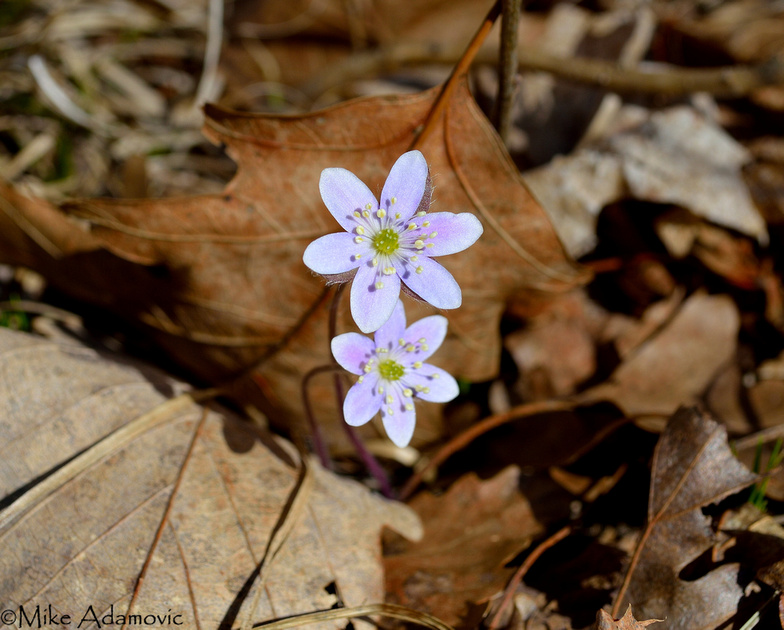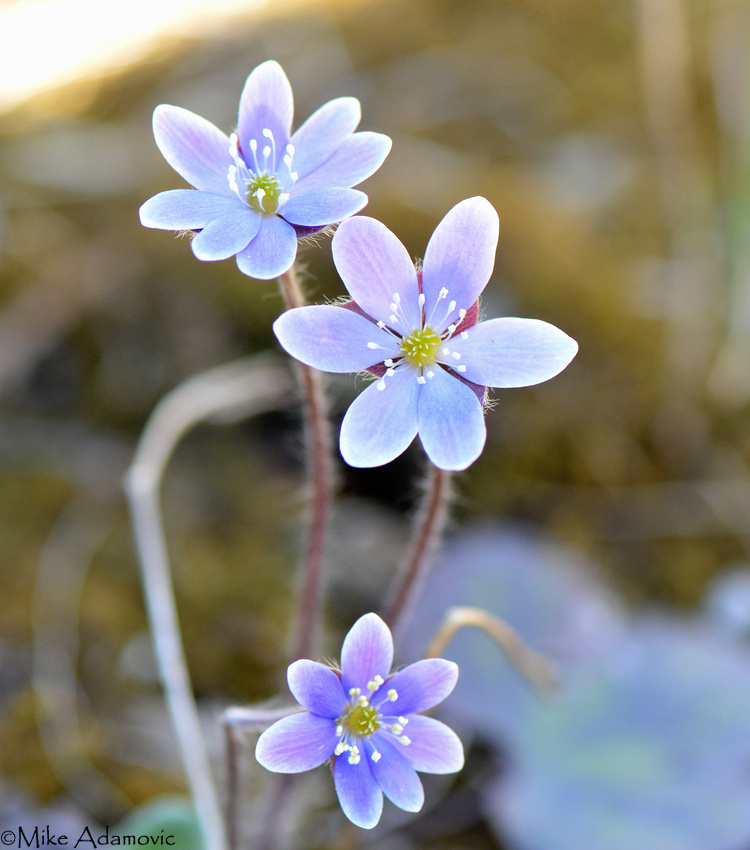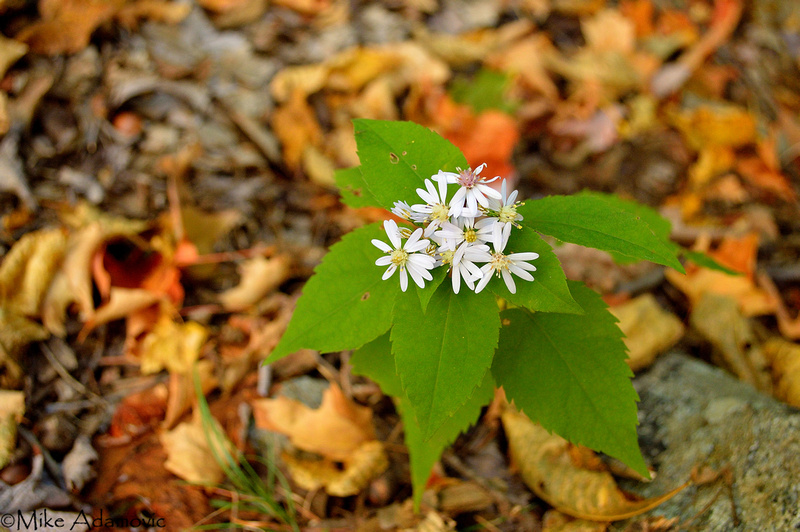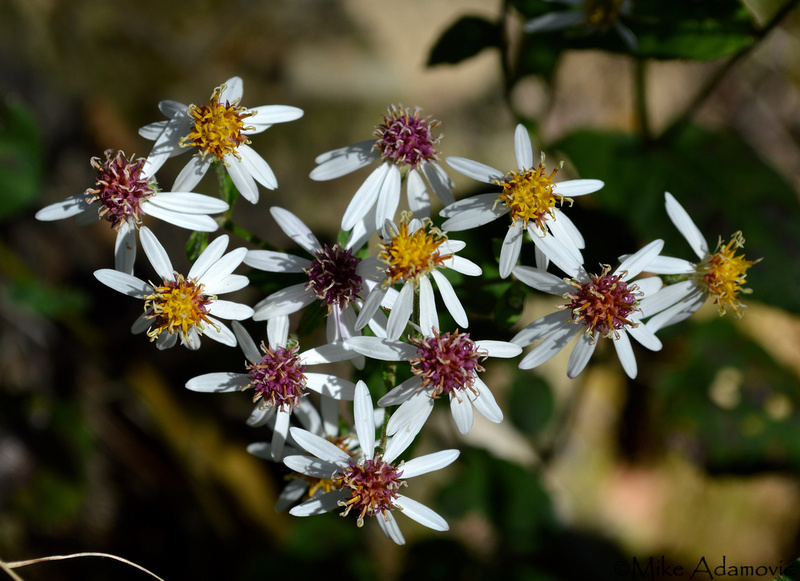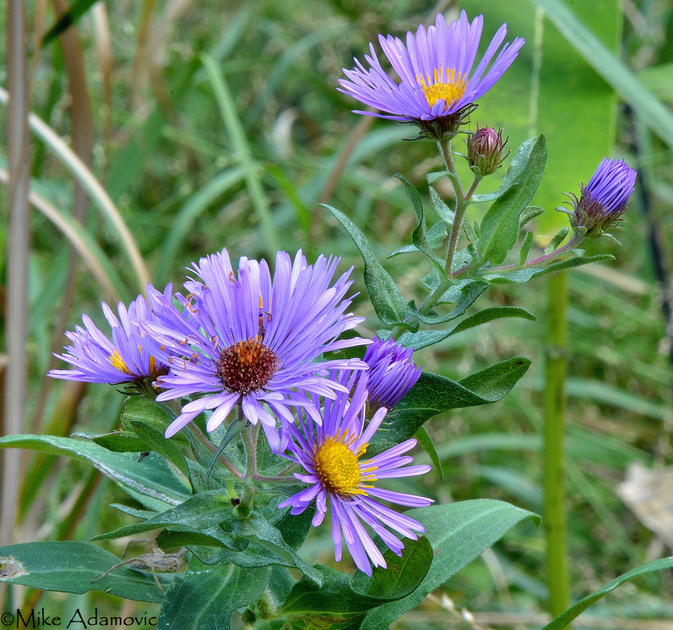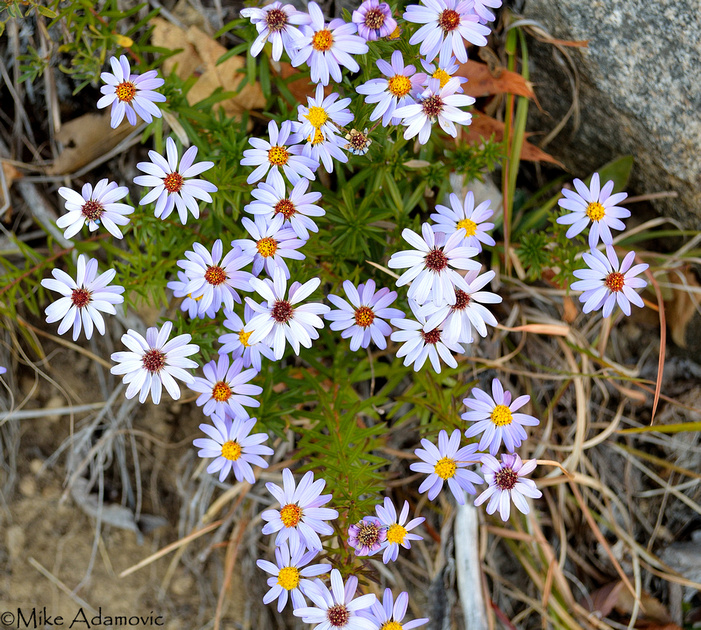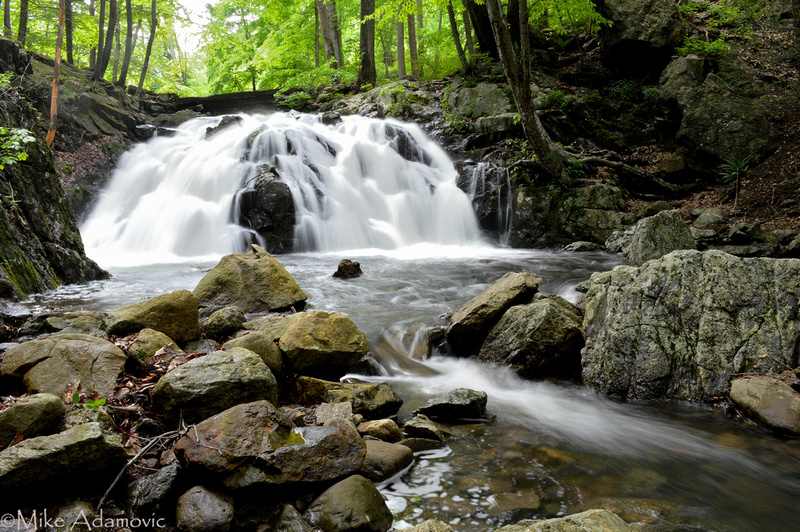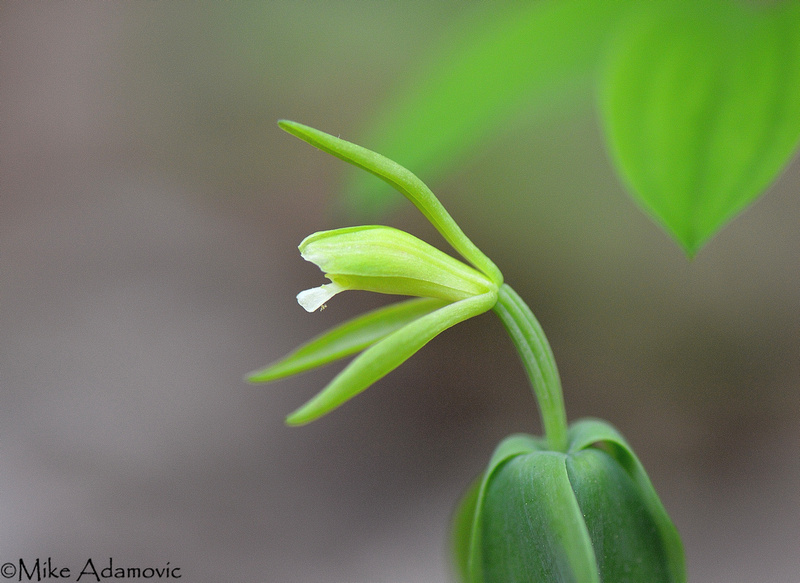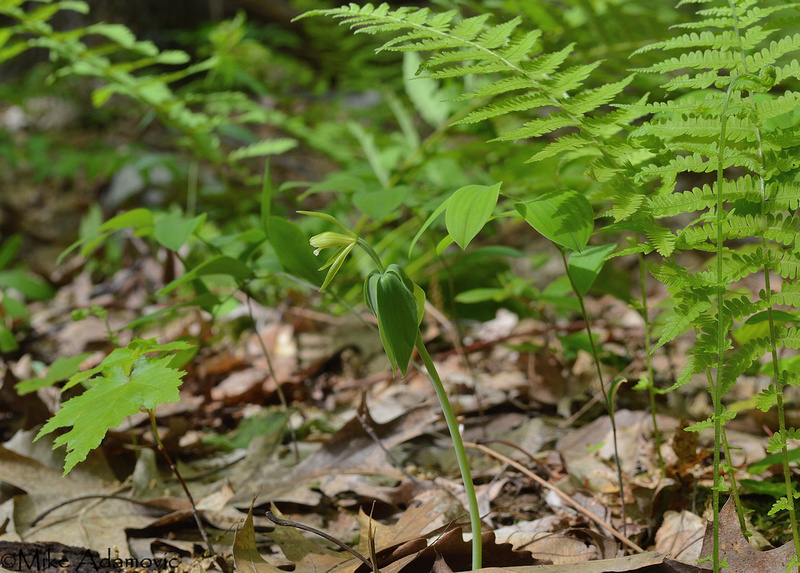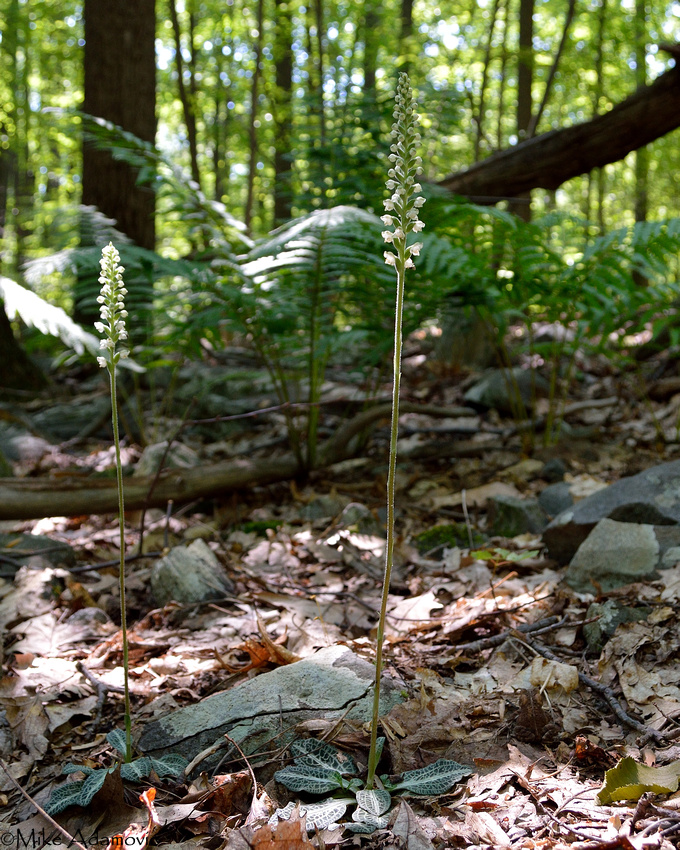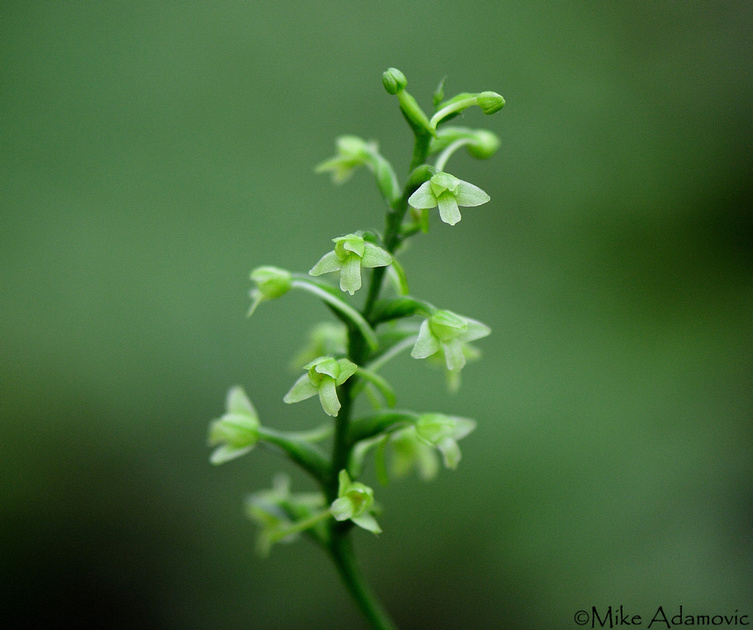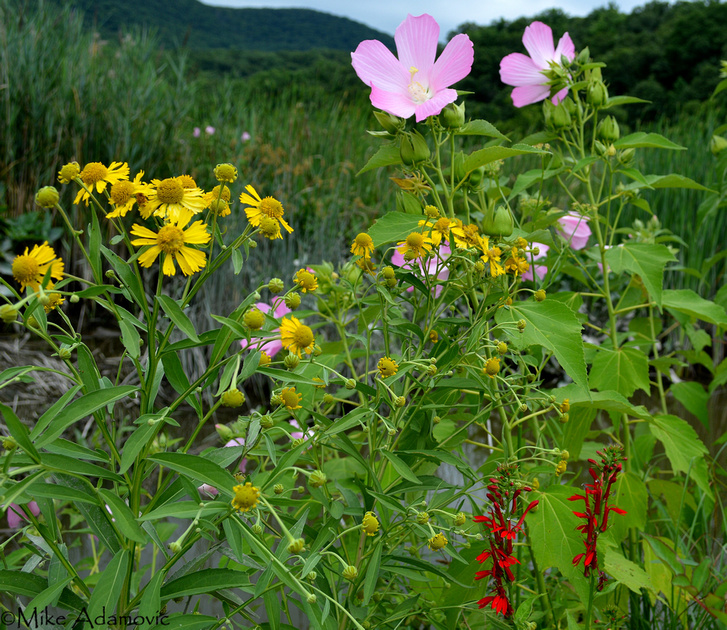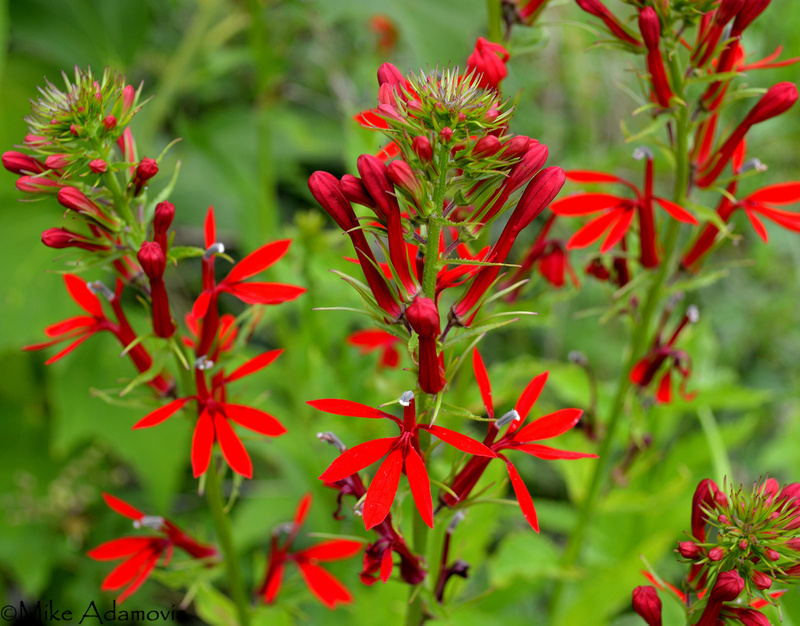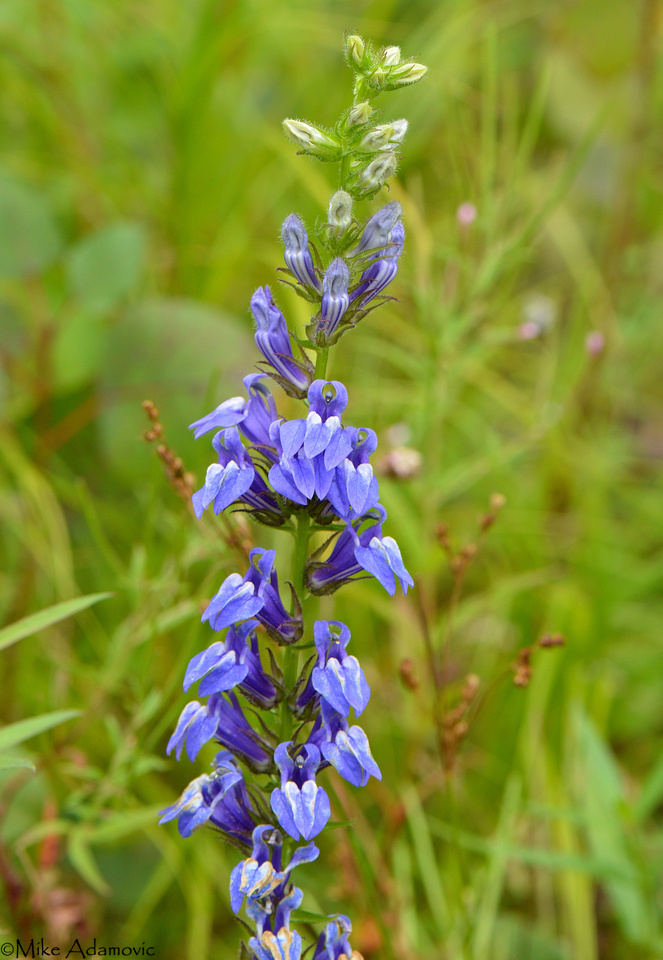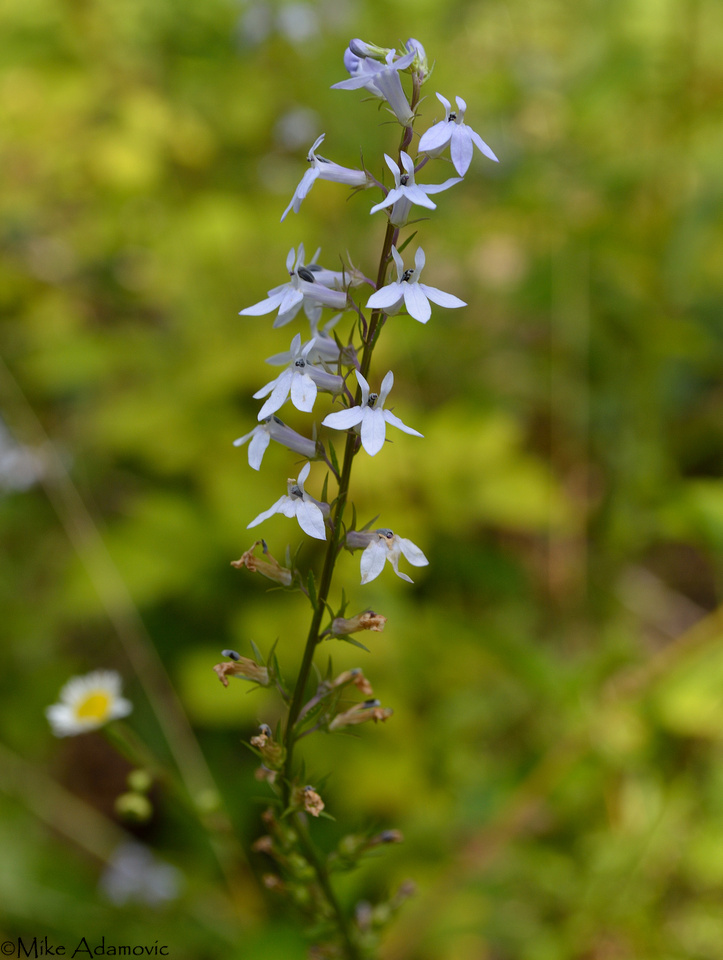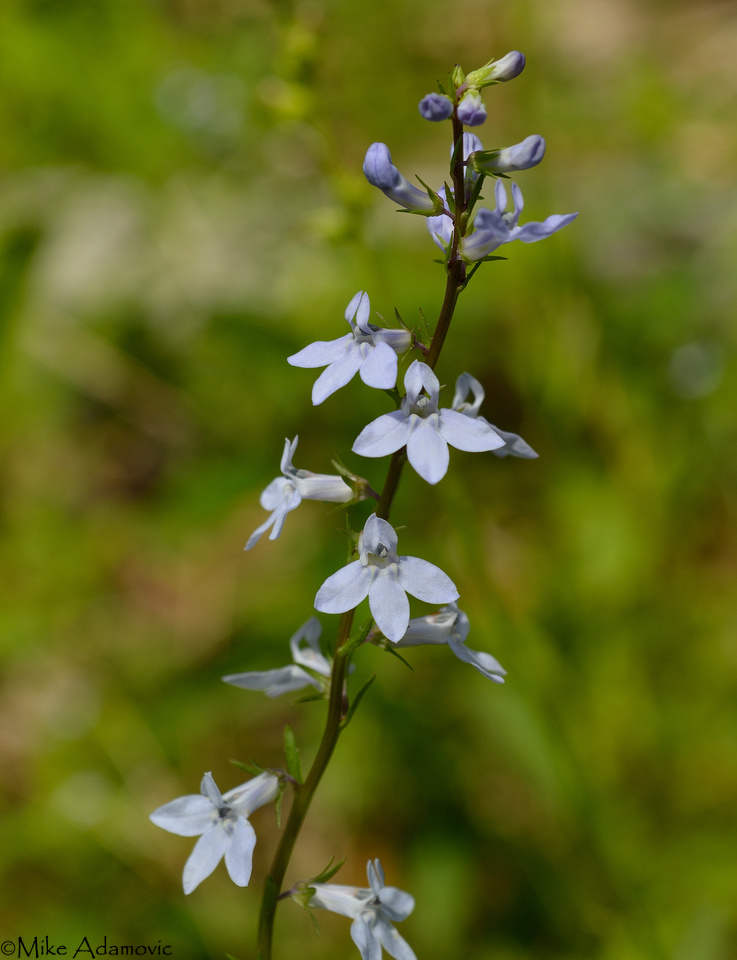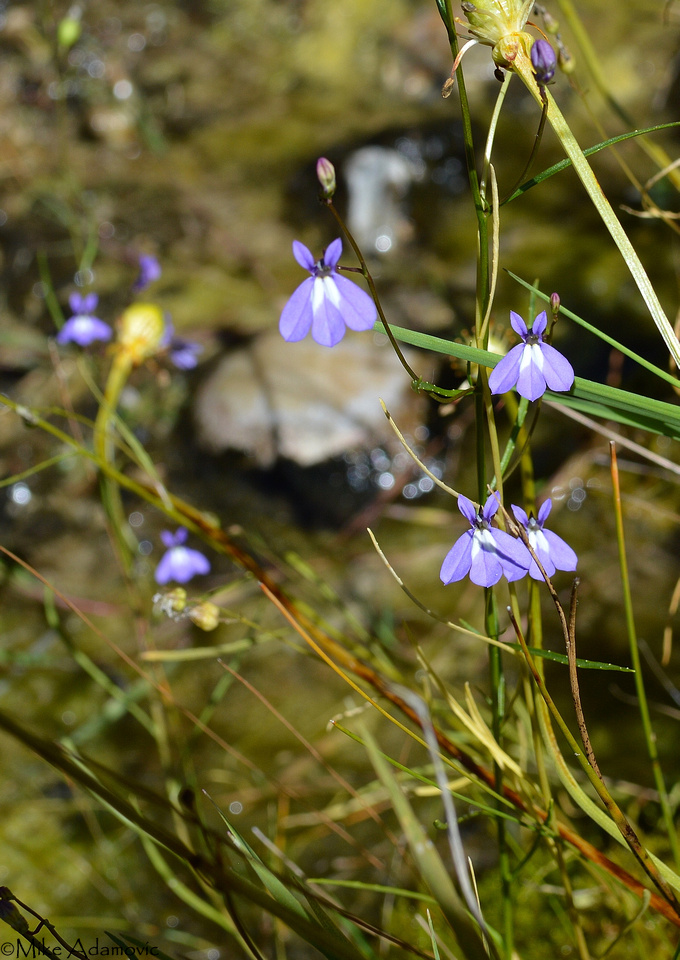Spring's First Wildflower: Hepatica
To those weary of winter the first bit of relief can be found sprouting amid heaps of decaying leaves at the end of March or the beginning of April. Hepatica, one of the earliest arriving wildflowers and harbinger of the spring season, emerges from bleak forest floors to decorate the surroundings with vivid arrays of pastel purple, lavender, pink, and white. It's an exotic departure from the monotonous hues of winter that have heavily dominated the landscape for months. Though somewhat small, these flowers pack a rather large punch and remind us that renewal is close at hand.
Asters
The end of summer is often marked by decline—trees lose their youthful and lively green, leaves plummet like rain similarly to the temperature, and sensitive vegetation begins to wither. But there's more to the early fall season than just decay and loss. It should rather be marked by the burgeoning color that expands across the landscape—not in relation to the autumnal leaves—but rather of late blooming wildflowers. Starting in August and lasting until the late days of October or even early November, asters and goldenrods enliven the fields and forests with bursts of floral grandeur. The asters in particular are the stars of the season, quite literally. In Latin, aster directly translates to star. It's a fitting description for a plant that possesses innumerable tiny blossoms, which are often white, and when seen growing together in a meadow or roadside are usually in such profusion that one cannot help but admire their uncanny resemblance to the overhead fixtures of the night sky. The naturalist Henry David Thoreau was impressed enough with their brilliance to poetically describe them as "a starry meteoric shower, a milky way, in the flowery kingdom." Even he admitted that just when "you thought that nature had about wound up her affairs... now, to your surprise, these ditches are crowded with millions of little stars." Asters are especially resistant to cold, and will continue to bloom until a severe frost or snow stymies their vigorous growth. In North America there are approximately 150 distinct species of aster, many of which superficially look nearly identical to one another. To add to this dizzying array of form, species often interbreed, forming countless hybrids. All of this together can make a positive identification incredibly difficult even to botany experts. Despite the complexity, these flowers are perfect for studying the intricacies of evolution. As an authoritative aster expert put it "the very quality which makes the genus so vexatious to the searcher after quick and certain definitions of species, makes it full of keenest interest to the student of variation. Variation... reaches a maximum development in Aster." While asters are most often viewed in open areas such as fields and roadsides, due to the accessible nature of these areas to us, asters grow in every habitat imaginable, from the deep and shaded understory of hardwood forests to limestone cliffs and even in mucky salt water marshes that are regularly submerged by tides. Plants are adapted to the unique set of conditions of their habitat. In open, sunny expanses, species often have thin, sometimes needle-like leaves, such as stiff (Ionactis linariifolia) and bushy (Symphyotrichum dumosum) asters. A leaf shape such as this helps reduce evaporative stress to plants constantly subjected to the desiccating force of direct sunlight. The white wood aster (Eurybia divaricata), by contrast, which thrives amidst shady forest floors possesses long, broad leaves that ensure even the most minimal spattering of sunlight that makes it to the understory is put to use.
Asters belong to the Composite family, a hugely successful and expansive group of plants that consists of around 24,000 species worldwide. In terms of flowering plants, only the Orchidae, or orchid family, rivals it in quantity of species. Sunflowers, coneflowers, and daisies are also composites. This family is special in the fact that each flowerhead is composed of numerous smaller flowers called florets, which bunched together form a single entity normally regarded as the "flower." Additionally, the asters have evolved an ingenious arrangement of the male and female florets to maximize cross-pollination. Female florets are located on the outer portions of the flower, while the pollen-bearing males are sequestered near the center. Pollinating insects have a tendency to first land on the edge of a flower and work their way inward before moving onto another blossom. In this way, pollen picked up at the middle one plant will be transferred to the edge of a different blossom, therefore ensuring genetic diversity. Another unique mechanism these plants possess is their ability to direct insects to unfertilized flowers. Newly opened flowers have yellow florets, but quickly morph to a reddish brown after pollination. This color change ensures insects don't waste time and deposit pollen on flowers that are already in the process of developing seeds.
When it comes to petal color, there is, not surprisingly, also considerable variation that goes way beyond ghostly shades of white. One of the most magnificent aster species is the New England aster (Symphyotrichum novae-angliae), which, with its amethyst hued petals surrounding a bright golden floret-filled center could scarcely be improved upon. "No plant is more lavish of its charms than the New England Aster," wrote Charles Raddin, a turn of the 20th Century essayist. While the name may portray this species to be a denizen of the Northeast, it's exceedingly more cosmopolitan, ranging all along the east coast westward to the Mississippi and beyond. The name allegedly is derived from the fact that early New England colonizers found it particularly appealing. Raddin writes that "on many occasions, books handed down from revolutionary days, have been found to contain dried specimens of the flowers." The craze supposedly began by John and Priscilla Alden, a prominent Massachusetts couple who arrived to the country via the Mayflower and were the first to make it their "chosen flower." Centuries later, in the 1940's, a consensus of American naturalists agreed that the New England aster was indeed a flower to use as a hallmark, voting it the 3rd most beautiful wildflower in the country.
Other asters are endowed with pastel purples, bluish, almost ultraviolet tints, or garner the occasional pink blossom. The color scheme is even greater in the many cultivated varieties that are now commonplace gracing businesses and home gardens. There are hundreds of cultivars from our native stock, most originating from the showiest of the bunch—New England and New York (Symphyotrichum novi-belgii) asters. Many of these cultivars still retain essences of their wildness, but possess traits that have been artificially exaggerated. Chrysanthemums, or "mums" for short, belong to the aster family and show the greatest level of alteration from centuries of cultivation, and are hence more "refined." These popular fall flowers originate from Europe and Asia. Compared to American asters and their cultivars, mums often offer few rewards to bees and other insects, having been meticulously honed to produce ornate aggregations of petals and little else. A healthy autumn garden would do well to be populated with a selection of natives that produce abundant quantities of pollen and nectar for beneficial pollinators.
A majority of asters are perennials, so they will continue to reappear year after year. They spread by expansion of rhizomes, or roots, as well as by seeds. Native asters are prolific seed producers. Their tiny seeds are a late autumn food source for a variety of wildlife, most notably birds, which heavily rely on them for sustenance after other sources have been exhausted. Over the years asters have gained much in the way of lore and superstition throughout all civilizations they dwell in. To the Greeks, asters were referred to as the "many-eyed," and were employed to adorn the altars of their gods. Burnt leaves were also reputed to have the power to drive away snakes. In Germany, the European capital of mystic philosophy, they were used in divination charms by the enamored to see if their love was likely to be reciprocated or not. And in North America, various Indian tribes would smoke dried aster roots as a method to attract game (the smoke purportedly mimicked animal scents or pheromones). Additionally, plants were believed to possess certain medicinal qualities. The smoke of white heath aster (Symphyotrichum ericoides) was used by Mid-western tribes to revive the unconscious. A concoction of aster tea brewed from both leaves and flowers was also reputed to be efficacious in eliminating headaches, fevers, congestion, and a variety of other ailments. The list of possible uses goes on and on. In essence, asters were a panacea, or cure-all. A belief that asters could be utilized to combat illness was not confined to Native Americans. An 1839 edition of the New England Journal of Medicine printed a letter that detailed several instances of (not surprisingly) New England asters curing the supposedly incurable. It was reported effective in treating particularly debilitating cases of eczema by use of "a strong decoction of the herb," used not only in washing the affected area, but ingesting it as well. As the author states, "a tea made from barley malt, sarsaparilla and this aster (the tops and flowers), and so bittered with fumitory as to resemble beer in some measure, I consider a useful drink while curing eruptive disorders." Kidney ailments were similarly treated. Be it their physical beauty in color, shape, and form, or by their utility in numerous tasks ranging from medicine to magical divination, the ubiquitous asters which span the globe in their 250 varieties, are truly a gift for all humanity. The ancient Greeks believed the flowers arose from Astraea, goddess of innocence and purity. After the gods had left earth once humanity had entered a dark and sinful period, she alone remained, endeavoring to restore peace and order. But, eventually, she also retreated, making her home among the stars where she became known as the constellation Virgo. After a vengeful Zeus had exacted a terrible retribution on the people of earth by issuing an epic flood, Astraea returned and visited the summit of Mount Parnassus, the one spot that had been untouched by the floodwaters, and sowed the seeds of a new type of plant that reflected her mission of purity. These flowers took the name of Aster. And so that all the races of men might be reminded of her ideals, Zephyrus, god of the west wind, scattered the seeds to every corner of the earth.
Waterfalls
There’s something deeply captivating about waterfalls. The raw and intense power each wields as it drops its silvery contents from headlong height, where its forceful tumbling on rocks below produces a potent roar that from a sufficient distance morphs into a gentle, soothing voice that carries with it cool and damp restorative breezes, is something grand and enthralling. We can’t help but revere these uncommon natural splendors, not only for the visual and audial thrill, but as the landscape painter and writer Thomas Cole indicated, by the impression they make on the mind. In his essay "American Scenery," Cole expresses that “in gazing” on these natural artworks, “we feel as though a great void has been filled” so that “our conceptions expand” and “we become a part of what we behold!”
Verkeerderkill Falls (Sam's Point Preserve)
Orchids
Pink Lady's Slipper
Loved for their peerless beauty, delicate sculpture-like form, and seemingly exotic attributes, orchids are often revered above all other wildflowers. Witnessing one thrive in the wild, whether a common or rare species, is an exhilarating experience not soon forgotten, especially when one comes to know and appreciate the complex mechanisms at play behind their existence.
Rose Pogonia
The Hudson Valley is home to numerous native orchids, along with several non-natives. Nearly every habitat type is sure to harbor at least a few varieties, if you know where and when to look. Similarly to the spring ephemerals, these flowers often have fleeting lives.
Small Whorled Pogonia
The Hudson Valley population consists of a mere 6 individuals and fluctuates constantly. Not every individual emerges on a yearly basis. Oftentimes plants will lay dormant due to poor environmental conditions, needing to recuperate from a previous year’s energy-intensive blooming, or an unknown stress. Small whorled pogonia is exceedingly rare throughout all its range, and has been listed as a federally threatened species as a result.
Small Whorled Pogonia
Downy Rattlesnake Plantain
Little Club-spur Orchid
To view more orchid photos, visit the "Rare and Unusual Plants" album under the galleries tab. The Colorful Lobelias
During the latter half of the summer season flowers of the genus Lobelia first make their appearance, adding gaudy splashes of color to the overwhelmingly verdant surroundings that take hold of the landscape after the last of the vibrant spring ephemerals have faded away and before the tawny autumnal tints arrive. Coming in an unusually varied and vivid bunch, the hues garnered by this genus can easily be mistaken as originating from some foreign or tropical locale, particularly when it comes to cardinal flower and great blue lobelia, the brightest and showiest of the group, which resemble imported garden escapees. But, in reality, these vibrant reds and blues that glow as brightly as neon lights in our seemingly tempered forests and wetlands are in fact native to the U.S. Awarded the honor of “America’s favorite” by Roger Tory Peterson in his wildflower field guide, it’s easy to see why the fiery-red cardinal flower has gained such an impressive reputation. Standing between 2-5 feet tall with a color brighter than even the bird endowed with the same name, it’s unlikely to go unnoticed. Moreover, each plant usually bears a dozen or more blossoms along the plant’s slender spike that rises above all surrounding herbaceous vegetation; such floral extravagance “dazzles you,” as Thoreau voiced. John Burroughs, another poet-naturalist, in upstate New York, was similarly impressed with the species—enough so to write a poem about the cardinal flower in which he described the vivid plant a “heart-throb of color.”
This color comes in handy for attracting ruby-throated hummingbirds, the cardinal flower’s chief pollinator and sole hummingbird species native to the Northeast. As one of the few northern plants possessing red flowers—the hummingbirds color of choice—it’s the main reason these birds have been able to successively colonize our region. Both species find themselves mutually reliant on one another, and, not surprisingly, therefore have closely overlapping ranges. A decline of either species will inevitably result in a similar loss for the other. The shape of the tubular flowers have evolved to facilitate pollination by long-tongued creatures. Aside from hummingbirds, butterflies appear to be the only other pollinator capable of extracting the deeply sequestered nectar. The derivation of the plant’s name is not what you might think. While it’s tempting to conclude that the flower was named after the scarlet bird, or vice-versa, the naming of both actually harkens back to Europe. Clerics of the Catholic Church, called cardinals, wear cloaks of an identical hue—whence comes the name. On the other side of the color spectrum lies the great blue lobelia, a plant hardly less impressive than its scarlet-tinted cousin, sporting flowers imbued with a twilight azure of fading evening skies. Eloise Butler, an early 20th Century botanist, describes it filling late summer meadows “in such opulence” that the surroundings morph into an artwork seemingly “gemmed with lapis lazuli and rimmed with goldenrod.” This species is smaller, but more robust than the slender 3-6 foot tall cardinal flower, having its inch long blossoms more tightly packed and condensed. With these concentrated features its color presentation is dramatic and indeed gem-like.
As red attracts hummingbirds, blue, it seems, is the prime color to draw bees. Evolutionary speaking, it’s generally thought to be the most advanced flower color. Green emerged first, and then with a linear progression, white and yellow, red, and lastly the deep and enigmatic blues, developed. While bees are the main pollinators, hummingbirds will pay the occasional visit, although the stouter flowers favor pollination by the former. The plant’s Latin name, siphilatica, is in reference to it having been used in years past as a treatment for syphilis. Native Americans held its efficacy in high enough esteem that enterprising colonizers had it exported overseas. European physicians, however, failed to find it of any use.
Various tribes also believed it to possess magical qualities. Legend has it that if L. siphilatica is dried, ground into powder, and thrown into the winds of an approaching storm, it has the power to render them benign. The Iroquois steeped the plant in hot water and drank a concoction of it at night to ward off spells and other bewitchments. Lobelia inflata, commonly known as Indian tobacco, is another related species which has been used for a multitude of restorative purposes. Unlike the name suggests, the plant was not recreationally used; it was smoked only occasionally for medicinal purposes. Aboriginal inhabitants employed it mainly to treat asthma and other lung ailments. Ironically, modern research has shown the plant contains an alkaloid which has the potential to help smokers quit.
Its other chief use was as an emetic, meaning it induces vomiting. Other names for the plant consist of gagroot, puke and vomitweed. The plant has such an acrid taste that even the most ravenous livestock will avoid it. The ever-curious Thoreau himself tried the plant once noting that “tasting one such herb convinces me that there are such things as drugs which may either kill or cure.” A tea made from the leaves is so potent that in 1879 a Canadian farmer was confident enough in the plant’s ability to cause vomiting that he was recorded as humorously betting a team of horses that drinking the liquid would do the trick. Numerous historical accounts attest to its efficacy for such purgative purposes. Indian tobacco’s diminutive ¼ inch long flowers are studded along the length of the upright spike with a density much lower than the lobelias already described and bear a purple pastel coloration. Due to these factors, it’s by far the most frequently overlooked in the bunch, although its distinctive inflated seed pods, similar in appearance to small unripe grapes, make it easy pick out among a mass of vegetation. Though prized more for its medicinal merits than its beauty, an up-close look at its finely crafted blossoms is sure to draw admiration and respect. All three plants can be found in bloom from August to September. Indian tobacco arrives a bit sooner, sometimes as early as mid-July and thrives in drier woodland habitats less conducive to its soggy-dwelling brethren. It’s not unusual to spot individuals growing in thin soils along rocky trails on the sides of mostly xeric mountains. Cardinal flower and great blue lobelia, in contrast, prefer much moister environs, usually inhabiting the borders of streams, rivers, and other perpetually damp areas offering abundant sunlight. It’s certainly not much of a challenge to find these plants in areas in which they grow. All stand tall and erect with an air of confidence, matured from the flowers of spring that barely rear their shy heads above the detritus of the forest floor. As the year progresses each successive burst of flowering plants must reach higher than their predecessors if they wish to be seen and pollinated. They must keep in step with the ever-rising herbaceous vegetation that surrounds, consisting mostly of grasses and weeds, which by the time the lobelias put forth flowers can reach waist height or higher. With all the energy these plants have to expend to outcompete their duller competitors, it would be a shame to have such visually impressive displays be for naught. Get out there and search—it takes only a fraction of the time to find these common beauties than it would to locate rarer species endowed with a similar level of elegance.
Other local lobelias:
Pale-spiked lobelia (Lobelia spicata)
Kalm's Lobelia (Lobelia kalmii)
|
